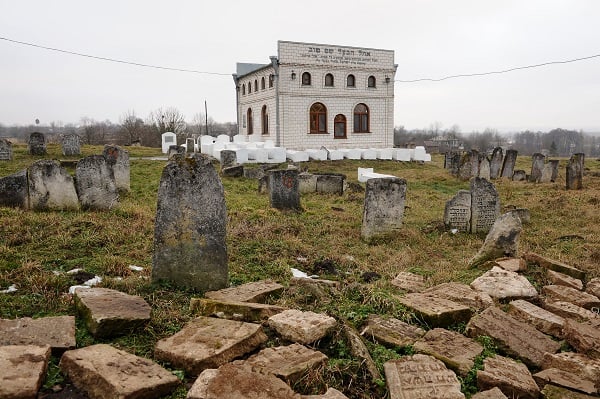Years of searching for the cave where Rabbi Israel ben Eliezer Ba’al Shem Tov prayed and learned finally meet with success.
The Rabbi Israel ben Eliezer, known as the Ba’al Shem Tov or Besht, was an 18th century spiritual leader and the founder of the Hasidic movement, which places greater emphasis on mystical thought and practices.
The location of his grave in Medzhibuzh, Ukraine, is well known, and is visited by thousands of Jews every year. While it was well-known that the Besht, who lived for a long period in a town called Kuty, regularly went into the nearby Carpathian mountains to a cave to pray, learn Torah and meditate alone, searchers had never found it – until now.
For the last two years, Vizhnitz Hasidim who are researching the roots of Hasidism on behalf of the Hagan Hanaeh organization, made forays into the mountains looking for the cave based on references in Hasidic writings. But the only cave they found was known to be the home of a well-known robber, the hero of the Ukraine’s Hutsuls tribe.
Then, last summer, they began speaking with Kuty locals from the tribe. To their surprise, some of the Hutsuls volunteered their own knowledge of the famous Jew who had lived in their town centuries ago. They informed the researchers that they knew where the Besht had used a ritual bath near the Vizhenka River – and where the cave was that he used for meditation.
At the end, it was Rabbi Yisrael Meir Gabbai, a Breslover hasid who founded an organization called Oholei Tzadikim, who reportedly found the cave. Oholei Tzadikim restores the graves of important Torah personalities in Eastern Europe. For the Besht (as well as others), they have built ohalim, or modest structures, over the graves in order to mark them. In the case of Hasidism’s founder, Gabbai’s organization also built a large synagogue, guest house and ritual bath near the burial site.
He is now planning to build an access road to the cave, which is currently very difficult to reach due to the heavy undergrowth surrounding it.
By: Batya Jerenberg, United with Israel
Do You Love Israel? Make a Donation - Show Your Support!
Donate to vital charities that help protect Israeli citizens and inspire millions around the world to support Israel too!
Now more than ever, Israel needs your help to fight and win the war -- including on the battlefield of public opinion.
Antisemitism, anti-Israel bias and boycotts are out of control. Israel's enemies are inciting terror and violence against innocent Israelis and Jews around the world. Help us fight back!




